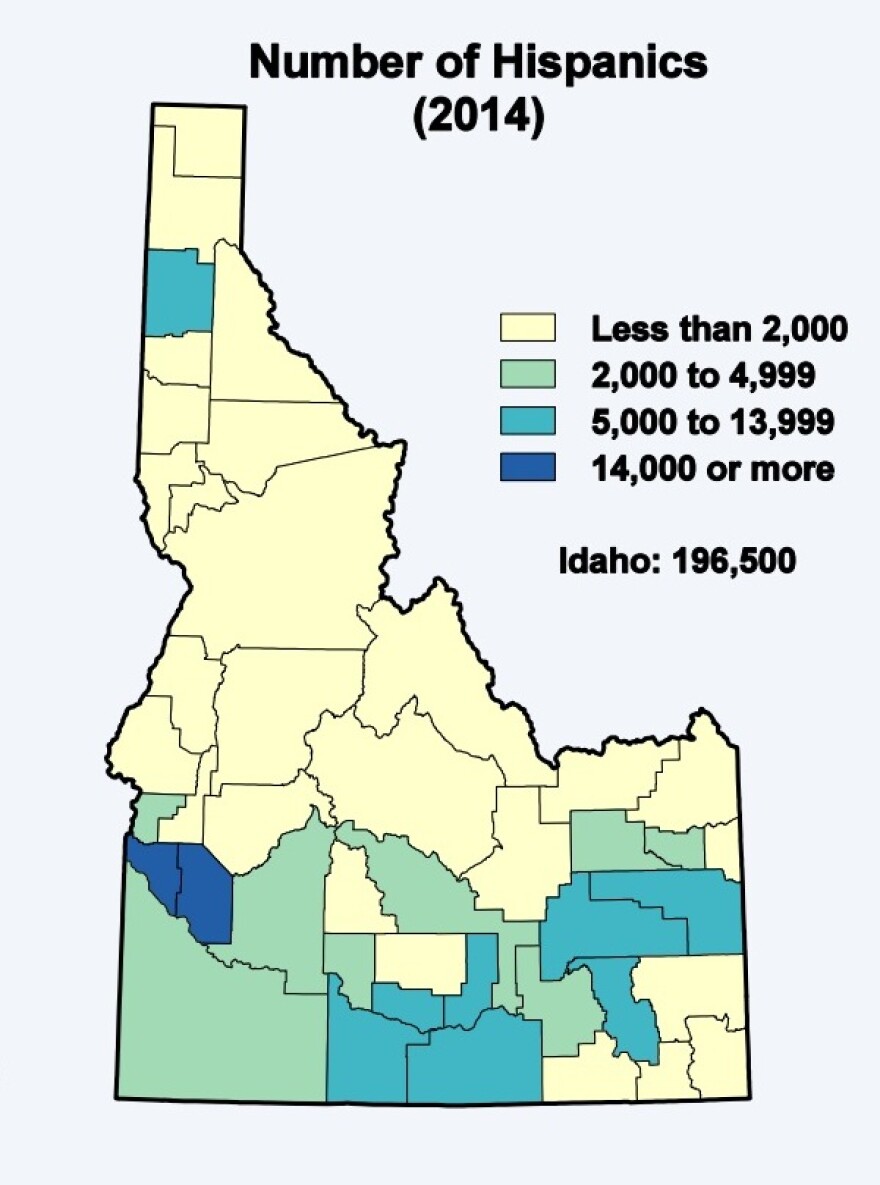
Idaho is becoming more diverse because of its increasing Hispanic population. The state has a smaller proportion of Hispanics than the nation as a whole, but that gap is closing. Most Hispanics in Idaho were born in the U.S. Those are some of the findings of a recent report from the University of Idaho’s McClure Center for Public Policy.
This deep dive into demographic data is the first of three studies on Hispanics in Idaho. Some of the information in this study is commonly available, but McClure Center director Priscilla Salant says they found a lot that might surprise people.
“There is, I think, an impression in Idaho that the state’s Hispanic population is booming or exploding,” Salant says. “In fact it’s growing fairly steadily.”
But it is growing quickly. Between 2010 and 2014 Idaho’s Hispanic population grew by 12 percent. The non-Hispanic population grew by 3 percent. The McClure Center research found that eight of Idaho’s 44 counties would have lost population overall if not for Hispanic growth. That means some places are bucking the national and state trend of declining rural populations.

“One misconception is that rural Idaho is characterized by declining populations, declining economies,” Salant says. “That’s not true in our agriculturally dependent, rural communities. In fact, there are parts of Idaho that are doing very well, thanks to the Hispanic in-migration.”
The word in-migration is key. Salant says 70 percent of Idaho Hispanics were born in the U.S. and most of the others have been in the country for more than a decade. Migration from other countries now makes up only a small part of Idaho’s Hispanic growth.
An increasing number of Hispanic residents were born in Idaho. For the last six years, Idaho’s Hispanic growth has been driven more by births than by people moving here. That’s part of why the state’s Hispanic population is much younger than the non-Hispanic population. The median ages are 24 and 38, resprectively.
One number from her report that Salant says she found stunning was the difference in birth and death for Hispanics and non-Hispanics. Non-Hispanic Idahoans are dying nearly as fast as they’re being born.

“That difference in birth to death ratios means our labor force is going to be in 10 [or] 20 years from now much more heavily Hispanic than it is today,” Salant says. “Without this emerging Hispanic labor force in Idaho, we would be looking at a shrinking labor force rather than a growing labor force.”
So baby-boomers and older Idahoans will become increasingly dependent on the services provided and taxes paid by the state’s Hispanics. Salant says that has huge public policy implications, especially in education.
The per-capita income is more than $13,000 lower for Hispanic Idahoans and the poverty rate is twice as high (though fewer poor Idaho Hispanics use food stamps than poor non-Hispanics.) Only 58 percent of Idaho Hispanics over the age of 25 have a high school diploma and 8 percent have bachelor’s degrees, compared 93 percent and 27 percent for non-Hispanics.
“In so far as education leads to higher wages and higher wages lead to increased tax revenues, it does have enormous implications for the state’s overall economic wellbeing, that this population receives educational opportunities,” Salant says.
The McClure Center’s next two reports on Idaho Hispanics will focus on education and the labor force. Those will come out in early March and early April.
Find Adam Cotterell on Twitter @cotterelladam
Copyright 2016 Boise State Public Radio


